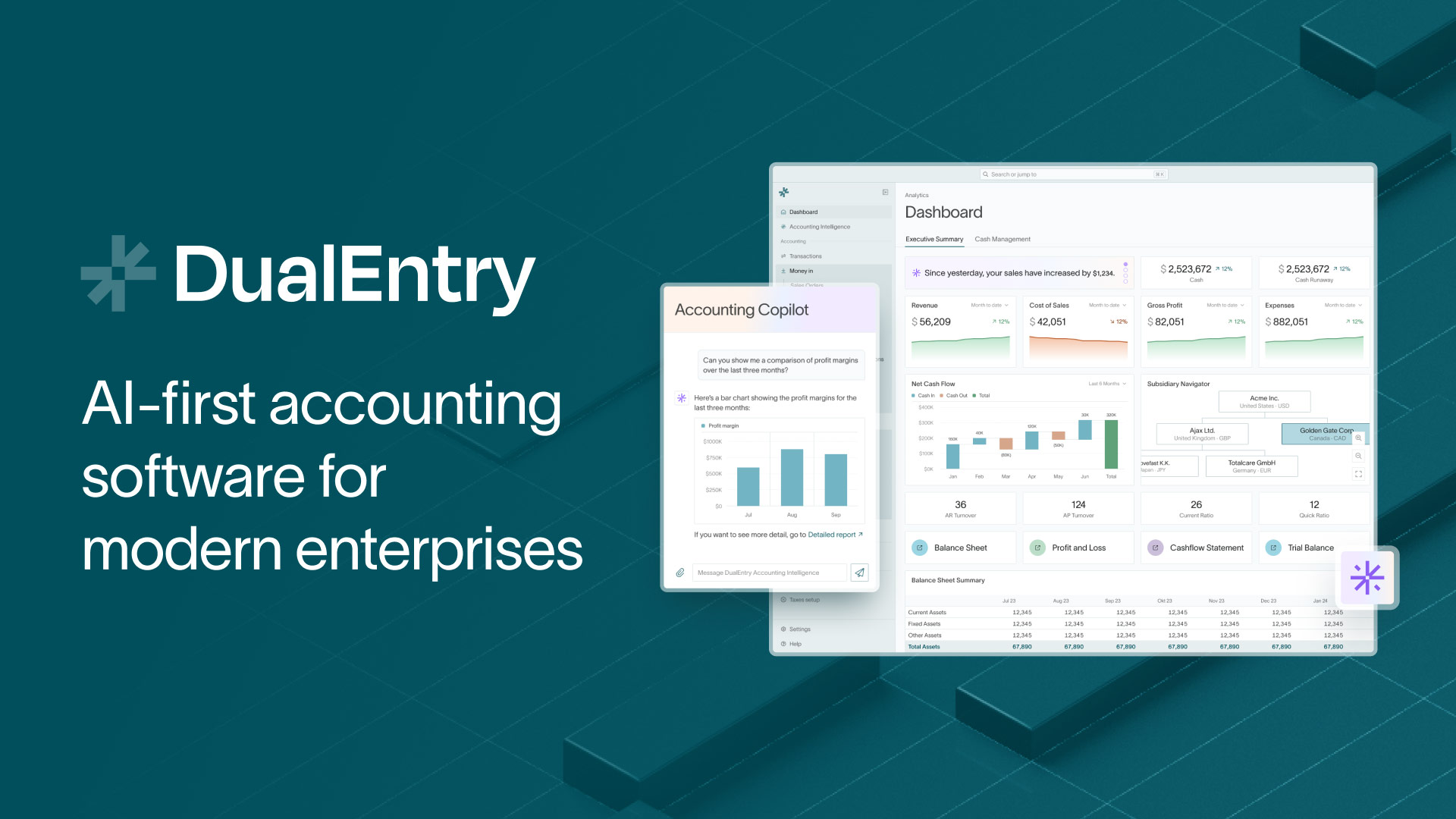
AI Accounting Startup DualEntry Raises $90 Million Promising to Replace Year-Long Software Installations with 24-Hour Setups
The $90 Million Push to Rewrite Enterprise Accounting: How DualEntry Wants to Kill the Consultant
A stealth startup claims it can shrink years-long ERP rollouts into a single day—and some of Wall Street’s top investors are betting big that now is the moment.
NEW YORK — Enterprise resource planning software doesn’t usually make headlines. It’s slow, expensive, and famously frustrating. Companies spend years rolling it out, consultants bill fortunes, and finance teams grind through endless manual work. But on Thursday, a little-known startup called DualEntry came out of the shadows with a bold promise: it can collapse the entire process into 24 hours.
The company isn’t just selling hype. Investors have already written massive checks. DualEntry revealed a $90 million Series A led by Lightspeed Venture Partners and Khosla Ventures, with backing from GV, Contrary, and Vesey Ventures. That brings its total funding to more than $100 million in just over a year—a lightning pace in one of software’s most stubborn markets.
“The ERP market is a half-trillion-dollar opportunity, and yet it looks almost the same as it did decades ago,” said Ravi Mhatre, partner at Lightspeed. His firm has backed companies like Affirm and Rubrik. Now it’s betting DualEntry could reinvent how businesses run their finances.

Fewer Accountants, Same Output
At the heart of DualEntry’s pitch is a startling idea: companies can shrink their finance teams dramatically. One client, Slash—a banking platform pulling in more than $100 million in annual recurring revenue—handles everything with a single controller. CEO Victor Cardenas was blunt: “Our goal is to be a billion-dollar revenue company and still have just one person in finance.”
Another early customer, Trillion Digital, trades hundreds of millions in crypto daily. Before DualEntry, its month-end close took half a month. After switching, it reconciles transactions every day. For CEO Daniel Berz, that shift was more than efficiency—it changed how the company operates.
Across the board, companies from startups to publicly traded firms have already processed $100 billion worth of journal entries through DualEntry. That’s not a test run. It’s proof the system can handle scale.
The Graveyard of Startups
ERP is a brutal market. Giants like SAP, Oracle, Microsoft, and NetSuite have ruled for decades, shielded by high switching costs and entrenched relationships. Even the shift from on-premise to the cloud barely rattled them. Plenty of startups have tried to disrupt the space. Most have failed.
DualEntry’s co-founder and CEO, Santiago Nestares, knows the pain firsthand. At his last company, he spent years fighting through ERP rollouts. One project collapsed completely. Another limped along—clunky, inflexible, and drowning in manual data entry. That experience became the fuel for DualEntry’s vision.
Why might this attempt be different? Three forces are colliding. AI models are now accurate enough to manage structured financial data. Banking APIs and modern fintech rails make real-time connectivity possible. And perhaps most crucially, the profession itself faces a cliff: three out of four CPAs are expected to retire in the next decade, leaving companies desperate for automation.
“For over 30 years, legacy ERP systems have been bloated and outdated,” said Vinod Khosla, founder of Khosla Ventures. He believes an AI-native system could slash costs, cut staff dependency, and finally make daily trial closes practical—something legacy systems rarely deliver.
Migration in a Day?
DualEntry’s secret weapon is something it calls “NextDay Migration.” In plain English, it’s an AI-powered engine that promises to lift every line item, subledger, and attachment from a legacy system into DualEntry’s platform within 24 hours. That includes giants like SAP and NetSuite, as well as smaller platforms like QuickBooks Desktop.
If this works at scale, it’s a genuine moat. A blend of connectors, mapping models, and playbooks could give DualEntry an edge that’s hard to copy. But it’s also the riskiest claim. Complex migrations—with multiple entities, bespoke workflows, and strict audit trails—rarely go smoothly, no matter the tech.
Beyond migration, DualEntry offers more than 13,000 integrations spanning banking, CRM, payroll, and HR systems. Its AI handles routine but painful jobs like bank matching, reconciliations, anomaly detection, and commentary generation—all built alongside real accountants.
Not Alone in the Race
Of course, DualEntry isn’t the only one chasing this prize. Rivals are surfacing quickly. Rillet raised $70 million this summer for its AI-powered ledger. Campfire pulled in $35 million to go directly after NetSuite. Nominal landed $20 million while touting its rapid growth in reconciliation and planning.
Meanwhile, incumbents aren’t sitting still. SAP has its Joule assistant, Oracle rolled out Fusion AI agents, and Microsoft is pushing Copilot for Finance. But there’s a big difference between bolting AI onto old infrastructure and rethinking workflows from scratch. Customers will decide which approach actually works.
Investors Smell a Shift
For VCs, ERP checks all the boxes: huge market, entrenched incumbents, obvious pain points, and sky-high switching costs. The pitch isn’t subtle—this is a once-in-decades chance to pry open a locked market.
The beachhead looks clear. Fintechs, SaaS firms, crypto shops, and payment platforms are primed for daily reconciliations and data-heavy automation. Manufacturing and public companies, on the other hand, will be tougher nuts to crack. Strict regulations, custom workflows, and legacy tech create friction. For them, layering AI on top of existing ERPs may prove more practical, at least in the short run.
What to Watch
How will we know if DualEntry is living up to the hype? Three measures matter most. First, can it really deliver migrations within days, especially for complex setups? Second, what’s the error rate on AI-generated journal entries? Third, will auditors sign off? Big Four firms demand clear data lineage and compliance with SOX and SOC 2. Without their blessing, adoption will stall.
Early wins with fintechs prove the product works. The real test comes when bigger, regulated companies trust DualEntry to run their books.
The Bet Ahead
The investment thesis is simple. If DualEntry can collapse ERP timelines and shrink finance headcount, the value created is massive. Companies paying six figures a year for software that cuts their close cycle from two weeks to one day—and lets them run leaner teams—will stick around.
The near-term market lies in API-rich industries and private equity-backed rollups wrestling with multi-entity complexity. Public companies may come later, but only once auditors give the green light.
ERP disruption has a history of false starts. Yet the timing feels different. AI has matured, infrastructure is ready, and the accounting talent pool is shrinking fast. Whether DualEntry seizes the moment—or ends up another headstone in the ERP graveyard—will be one of enterprise tech’s defining questions in 2025.
House Investment Thesis
| Category | Summary |
|---|---|
| Overall Trend | A significant, durable upswing in AI-native ERP/finance ops platforms winning customers and funding, driven by structural shifts, not a one-off event. |
| Deep Drivers | 1. Talent Shock: Accounting talent supply crunch forces automation. 2. Wired Data: Modern APIs make end-to-end automation tractable. 3. Incumbent Inertia: Legacy ERP providers (SAP, Oracle, Microsoft) are slow to re-architect core processes, creating a window for AI-first challengers. |
| Competitive Landscape | Challengers: Campfire, Rillet, Nominal, DualEntry. Winning new mid-market logos with rip-and-replace. Incumbents: SAP (Joule), Oracle (Fusion AI), Microsoft (Copilot). Slowing enterprise churn with embedded AI. The Prize: Owning the "close + reconciliation control plane." |
| Novelty vs. Marketing | Novel if Real: 1. Migration Engine Moat: "24-hour" full-fidelity migration (DualEntry's "NextDay Migration"). 2. Daily/Continuous Close: Feasible in API-rich, high-volume environments. 3. Agentic Workflows with Controls: Safe autonomy with auditable explanations, not just chat. |
| Target Market Fit | High-Fit: Fintech/Payments/Trading, SaaS/Marketplaces (API-rich, high-volume, change-friendly). Hard-Mode: Manufacturing, project-based services, public companies (heavy customization, legacy systems, strict audits). |
| Diligence Checklist | 1. Migration Truth: Validate sub-72-hour migration claims with subledgers/attachments. 2. Auditability: SOC 2/SOX posture; auditor-acceptable evidence packs. 3. Generalization: Handle multi-entity, multi-currency, interco eliminations. 4. Error Budget: Error rates on auto-post; liability for misclassification. 5. Unit Economics: Software vs. professional services revenue mix. 6. Defensibility: IP in migration playbooks, accounting corpora, controls framework. 7. Go-to-Market: ASPs, sales cycles, who signs the check. |
| Investment Thesis | Back the company that owns migration + daily close in API-dense verticals, ships auditor-grade evidence, and shows declining professional services drag. Can hedge with both AI-native ERP and agentic layers for incumbents. Pricing power from compressing close cycles and cutting headcount. |
| Operator Playbook | 1. Pick a Wedge: Win a specific, repeatable workflow (e.g., bank rec for SaaS). 2. Evidence Packs > UX: Prioritize immutable data lineage for auditors. 3. Controlled Autonomy: Use confidence thresholds and policy checks. 4. Productize Migration: Treat mapping and backfill as core IP. 5. Land Where APIs Sing: Start in API-rich sectors, then expand. |
| Key Risks | 1. "24-hour migration" claims not holding at scale. 2. Lag in Big Four audit acceptance. 3. Incumbent bundling pressure. 4. Model failure on data quality edge cases and long-tail invoices. |
| Go-To-Market Trajectory | 1. Now-12mo: API-dense mid-market (fintech, SaaS). 2. 12-36mo: PE rollups & late-stage companies with multi-entity sprawl. 3. 36-60mo: Public companies via auditor-blessed evidence. |
| Assessment of DualEntry | Signal: Strong (A-tier syndicate, $90M round). Category Leader Potential: Contingent on proving 10+ documented full migrations from major ERPs and securing auditor sign-offs for continuous close. |
NOT INVESTMENT ADVICE